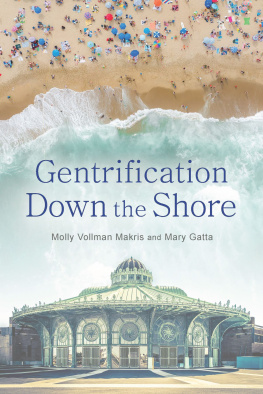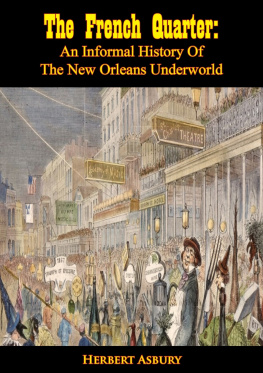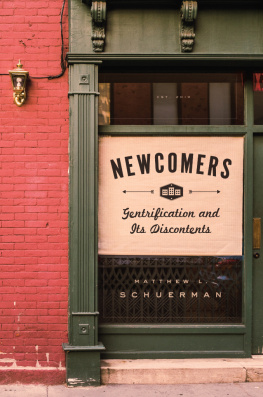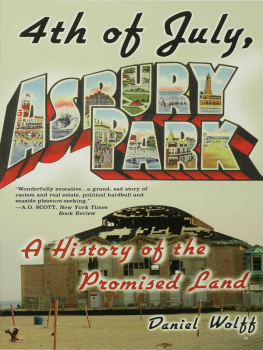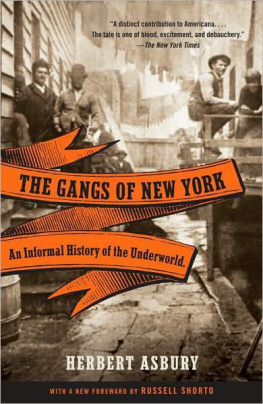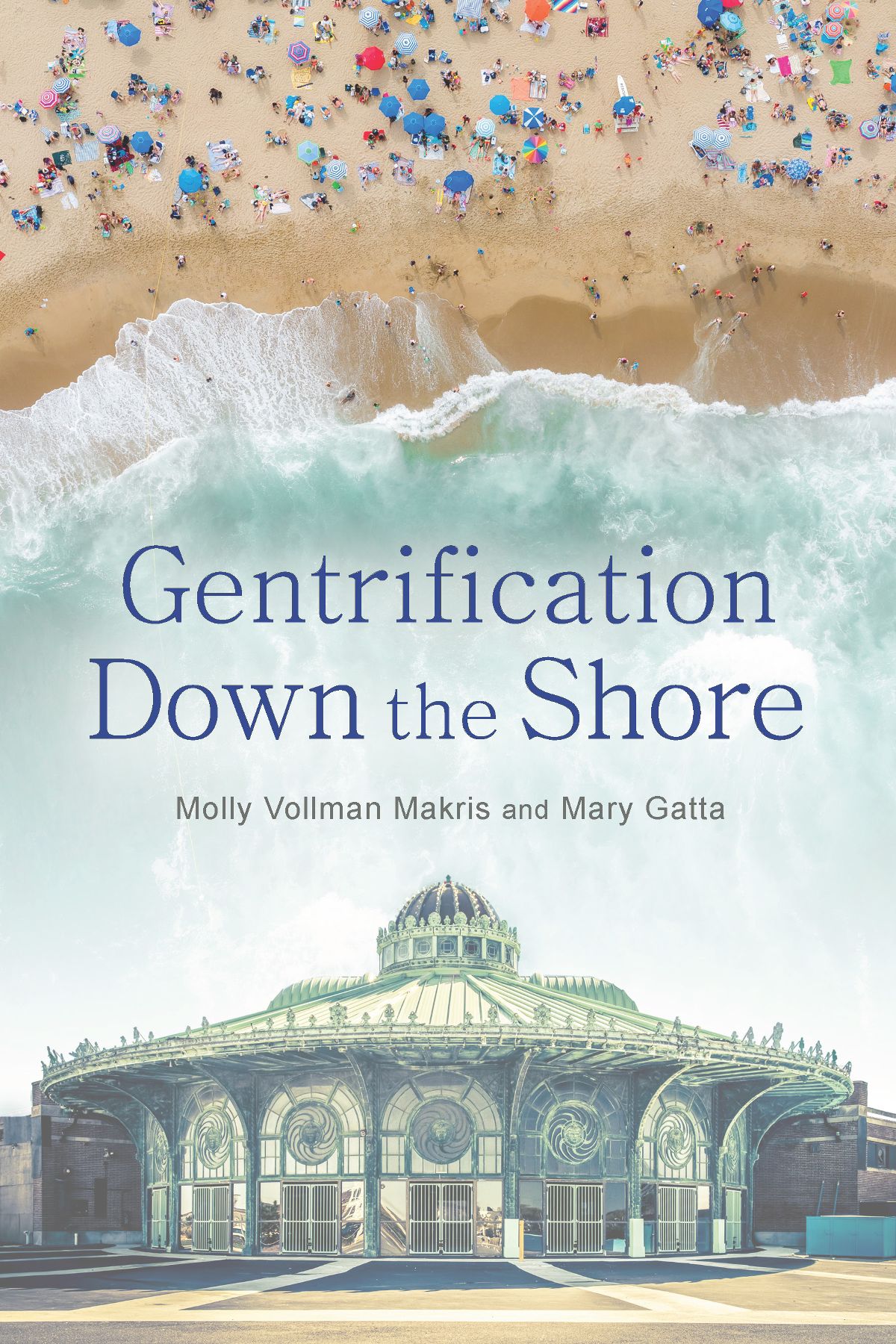
Gentrification Down the Shore
Gentrification Down the Shore
Molly Vollman Makris and Mary Gatta

Rutgers University Press
New Brunswick, Camden, and Newark, New Jersey, and London
Library of Congress Cataloging-in-Publication Data
Names: Makris, Molly Vollman, 1981 author. | Gatta, Mary Lizabeth, 1972 author.
Title: Gentrification down the shore / by Molly Vollman Makris and Mary Gatta.
Description: New Brunswick : Rutgers University Press, 2020. | Includes bibliographical references and index.
Identifiers: LCCN 2020005638 | ISBN 9781978813618 (paperback) | ISBN 9781978813625 (cloth) | ISBN 9781978813632 (epub) | ISBN 9781978813649 (mobi) | ISBN 9781978813656 (pdf)
Subjects: LCSH: GentrificationNew JerseyAsbury Park. | Sociology, UrbanNew JerseyAsbury Park. | Asbury Park (N.J.)Economic conditions.
Classification: LCC HT177.A76 M35 2020 | DDC 307.7609749/46dc23
LC record available at https://lccn.loc.gov/2020005638
A British Cataloging-in-Publication record for this book is available from the British Library.
Copyright 2021 by Molly Vollman Makris and Mary Gatta
All rights reserved
No part of this book may be reproduced or utilized in any form or by any means, electronic or mechanical, or by any information storage and retrieval system, without written permission from the publisher. Please contact Rutgers University Press, 106 Somerset Street, New Brunswick, NJ 08901. The only exception to this prohibition is fair use as defined by U.S. copyright law.
www.rutgersuniversitypress.org
To the residents of Asbury Park, and residents and lovers of cities everywhere, who are fighting to keep these spaces interesting, diverse, and accepting
To Eileen and Rudy, I love you
and
To the memory of Dr. William Helmreich, who showed us the invaluable importance of walking cities and listening to locals
MVM
To the memory of Paul Frankel, a scholar of the law and an aficionado of history whose intellectual curiosity is fondly remembered
and
To the memory of Dr. Henry Plotkin, a steadfast advocate for New Jerseys workers whose impact is everlasting
MG
Contents
Seasonal Gentrification
As I approach the Asbury Park Convention Hall on this cool, overcast day, I pass the looming statue of James A. Bradleythe town founder of Asbury Park. This statue is more noticeable to me today than during other visits. The statue has been in the news and plastered on social media because a group of local residents is fighting to remove the statue because of the history of segregation and racism tied to Bradley.
I pass the statue and approach the convention center for the Catsbury Park Cat Convention. Here a number of hipsters are making their way in. I walk beside some tattooed, T-shirt wearing parents with stylishly funky children gripping cat stuffed animals. Inside the Cat Convention, there are booths with original cat art, trendy cat toys in the shape of taco seasoning, raw cat food, pet beverages, and cat bowties. The crowd is predominantly made up of White twenty- to thirtysomethings, often in trendy cat headbands or dresses with colorful hairstreaks... and there are a lot of beards. In the background is the distinct buzzing sound of the tattoo artists at work. This noise mixes in the room with conversations about bands and the sharing of tattoo styles and tips.
When I leave the convention center, my cat lollipops in hand, I realize that Bradleylooking out to the ocean, facing the beautiful boardwalk and iconic entertainment venues of Asbury Parkhas his back turned on the west side of town.
adapted from field notes, 2018
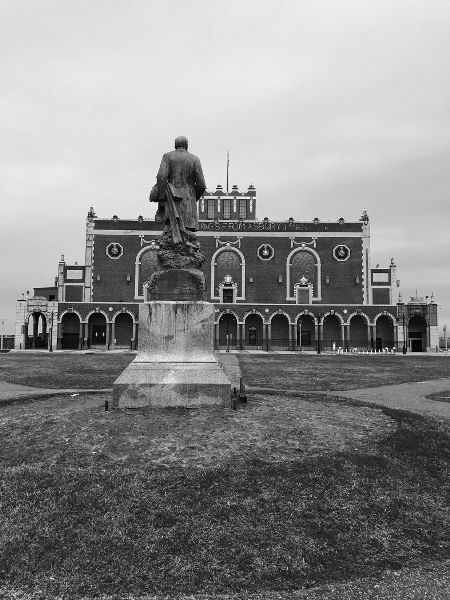
FIG. 1. Bradley statue. Photograph by Molly Vollman Makris, April 7, 2018.
In the late nineteenth and early twentieth centuries, Asbury Park, New Jerseya small beachfront city on the Jersey Shorewas booming. Considered a dynamic new resort community, it was a place of leisure, with live entertainment, an arcade, and a sprawling boardwalk along with two hundred hotels and restaurants. But not everyone enjoyed access to the amenities Asbury Park had to offer. While they toiled as waiters, entertainers, desk clerks, busboys, dishwashers, and housekeepers in the establishments that attracted vacationers to the city, Black workers were not welcome on the beaches or permitted to live on the beachfront East Side.
Next page
